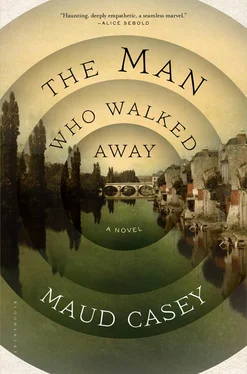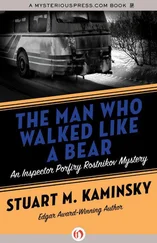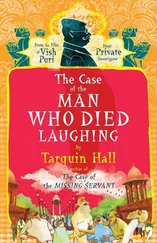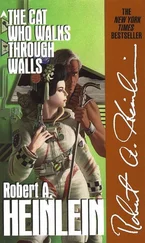Shhh! The entire amphitheater turns on him.
The great doctor scans the crowd slowly, an owl — has his head turned all the way around? The Doctor is sure it has. His father’s watch tick-tocks in his pocket so loudly that everyone in the amphitheater must hear it ticking off the excruciating seconds as the great doctor locates — hoo-hoo! — his face in the crowd. When he has, he stops and simply looks. And looks. And looks. A photographer after all, inscribing what he sees.
What does he see?
“I’m very. . sorry,” the Doctor stammers into the silence. Monsieur Eager’s gloat penetrates the back of his head. It is so much worse than his bony knees. See? it says. You never belonged here .
Why should he be sorry? Why should he be afraid? Has he come all this way to perch on a sliver of hard bench, jabbed by pointy knees and suffocated by hot, aristocratic bodies, in order to be afraid? He has never been afraid. He has never had the time. His parents never dreamed he would become a doctor. After they died, there were the long nights in the Toulouse railway station as a bookkeeper’s clerk and then there were the longer days as a deliveryman — shouldering heavy chandeliers through streets jammed with kitchen maids carrying baskets, and merchants with their unwieldy carts — while he went to school at night. Finally, he hopped aboard the Niger to become a cargo clerk on the Bordeaux-Senegal run. It was the ship’s doctor who saw in him what he couldn’t yet see in himself: the Doctor. He hadn’t received that sort of attention since his parents were alive, attention that said decisively, “You look tired. You must go to bed.” Or “Come eat. It’s dinnertime.” The ship’s doctor was so certain: You have a gift , and so he quickly returned home and took a job as an underlibrarian for the medical faculty while completing his baccalaureate in the sciences. He has worked at the asylum for nearly a year, and only now is he anywhere near becoming the Doctor the ship’s doctor predicted he might be.
He will not be afraid. And he will definitely not be sorry. He is not sorry at all. He stares right back. Here I am. I am what you see. (What did he see?) Another tremendous clearing of the great doctor’s throat— You too (hoo-hoo) will be banished —and then, as if the Doctor and his sneeze did not exist at all, he turns away.
“Is there something immoral about provoking such an attack?” he asks the crowd. There is general nodding and muttering and a wrinkling of brows.
“After I observed many patients suffering from the same symptoms, I thought, how can it be that such events are not described in the textbooks? Then one day I was struck with a sort of intuition about them: They are all the same. What you are about to see is not a series of individual small attacks, but a single event comprised of phases that will unfold sequentially. I will identify each phase, provoked by applying pressure to the hysterogenic points, as it occurs.”
An attendant hairy as a bear enters the amphitheater, wheeling a girl on a stretcher through the thin layer of sawdust. She is small and translucent, weak and fading. She seems, in fact, to be shrinking. But when she arrives in the center, she sits up. The air, hot and heavy and thick before, shimmers; it is electric. Was it the Doctor’s imagination, or has the entire audience leaned forward at once? And then he is leaning forward. The girl is a magnet and all of them little pieces of metal drawn up.
“And now,” the great doctor says, “I will give you firsthand experience of this pain.”
The girl slides off the stretcher, landing firmly on her feet. She pulls a plump hand through her braids to free her thick tresses. She shakes the waves out of her hair as if she is shaking everyone out of the room. She caresses her hair, fingers her thin nightgown. All these women: The great doctor has cultivated a veritable stable. There has been talk.
“The neurologic tree has many branches,” the great doctor says, “and each one bears a different fruit. You may not be able to see the tremor from where you sit, but it is there.”
“One thinks,” says the girl, looking in the great doctor’s direction though he does not look back, “one has dreamed something but it wasn’t a dream at all.”
The great doctor turns away from her, looking out at the crowd, but it is as though he were alone in his grand home with its dark alcoves trying to remember where he misplaced one of his thirteenth century prayer stools. Finally he turns back to her. She is small but fierce. They are well matched. For a moment it looks as though they might wrestle.
The photographer waits to press the stereoscopic bulb. Photography requires exquisite patience. The heavy wet collodion plates take time to prepare. Only after the photographer has situated the plate; only after he has framed the shot; only after he has looked again; only after he has focused, and focused again; only after he has adjusted the light and then adjusted it again; only then does he squeeze the bulb.
“Look at that profile,” Monsieur Eager says. “That spectacular nose.”
A spectacular nose? As if a nose were any indication of greatness, the Doctor thinks, still furious at his own for betraying him. Still, there it is, that spectacular nose. It is as though the great doctor has had a hand in its shaping, in the same way the Doctor has often felt that his own crowded features are some fault of his own character. As much as he wants the photographer to drop one of those large glass plates on the great doctor’s Napoleonic head, it is undeniable. The spell has been cast. What will he do next? There is a reason the great doctor is the great doctor.
This time the monkey’s squeal is followed by a resounding thump, as though he is hurling himself against one of the amphitheater’s stout oak doors.
“What do you know?” the girl asks.
In the girl’s round face there is heat and anger, and a question the Doctor can’t quite name. He is reminded of a demonstration he went to recently, given by the disciple of a man who was famous for his experiments on the facial muscles of rabbits. That night, he used a volta-faradaic apparatus to charge the skin of a woman with electricity. “A veritable living anatomy,” the scientist had said, isolating the muscles in the woman’s face: there, the muscle for bliss; there, the muscle for fear; there, the muscle for sadness. And then there were the moments in between the grand emotions: between bliss and fear, fear and sadness. It was that in-between look on the woman’s face that fascinated the Doctor. There it is — that strange, searching look — on the fierce girl’s face too.
Clunk go the photographer’s plates as he changes one for the other, and then another flash of light illuminates the amphitheater: the mysterious question on the girl’s face inscribed for eternity.
“Her world is without color,” the great doctor says, nodding to the hairy-bear attendant, who brings out a wooden chair and presses the girl down into it. “But hysteria has the regularity of a mechanism. There is a choreography, like a dance.”
The great doctor holds a hand up to the rustling audience— silence —nodding to the hairy bear. The only noise is the thump of the monkey hurling itself against the door.
If the Doctor squints, the girl’s face is the face of any girl in the street, a sweet, pretty face that would make him look again. The question written there is not familiar, but it too would make him look twice. It reminds him of Marian when she was carried into the asylum after she woke to discover herself paralyzed from the waist down. She clutched her throat and described a great ball rising in it, choking her, but as he began to ask her even the simplest questions— How are you feeling now? May I plump your pillow? Would you like a glass of water? — her hands fell to her lap. As though he were holding up a mirror and in her reflection she saw for the first time her own exhaustion. The great ball in her throat subsided and she began to breathe normally again. She looked at him in the same way the fierce girl looks at the great doctor now. It isn’t a question after all but a look of gratitude that might be mistaken for love.
Читать дальше












